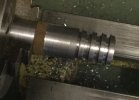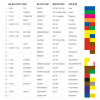Free machining EN1A will be easier to both machine and to purchase than any heavy wall tube. Decades ago, I made my first drivers with steel tyres - and to ease the load on the then tiny 'Super Adept' lathe (purchased £14 with my schoolboy pocket money), like Jim, had the supplier drill out the steel core. Then, for some years, wheels were cast and turned integral from nickel-silver castings from waxes ex vulcanised rubber moulds.
These days, I use only stainless steel, but have experimented with some cast iron bar that is continuously cast in a type of centrifugal process. It is very easy to turn (think butter), and can be obtained from merchants who sell cast bronze material for bearings.
Photo (ex the video below) shows a raw tyre blank being trepanned for a bogie wheel, from the same bar previously used for the driver tyres.
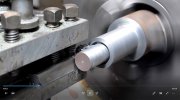
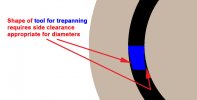
These are the most recently made wheels for current projects, 27inch dia wheels for Meyer type loco bogies, and drivers for a diesel shunter.
Today's task is making the brasses for those siderods.
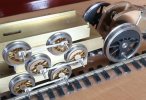
. . . and for those oddball track gauges, Peco Streamline gets knifed through the centre, then stuck down using double-sided tape

-Brian McK.

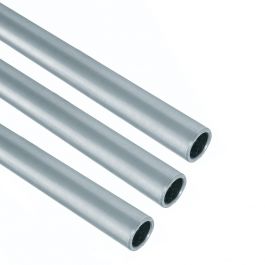
 It could be worth looking for a machine shop which works with hydraulic tube to negotiate acquiring some offcuts.
It could be worth looking for a machine shop which works with hydraulic tube to negotiate acquiring some offcuts. I think I could have sat my Cowells on the topslide of his lathe.
I think I could have sat my Cowells on the topslide of his lathe. 